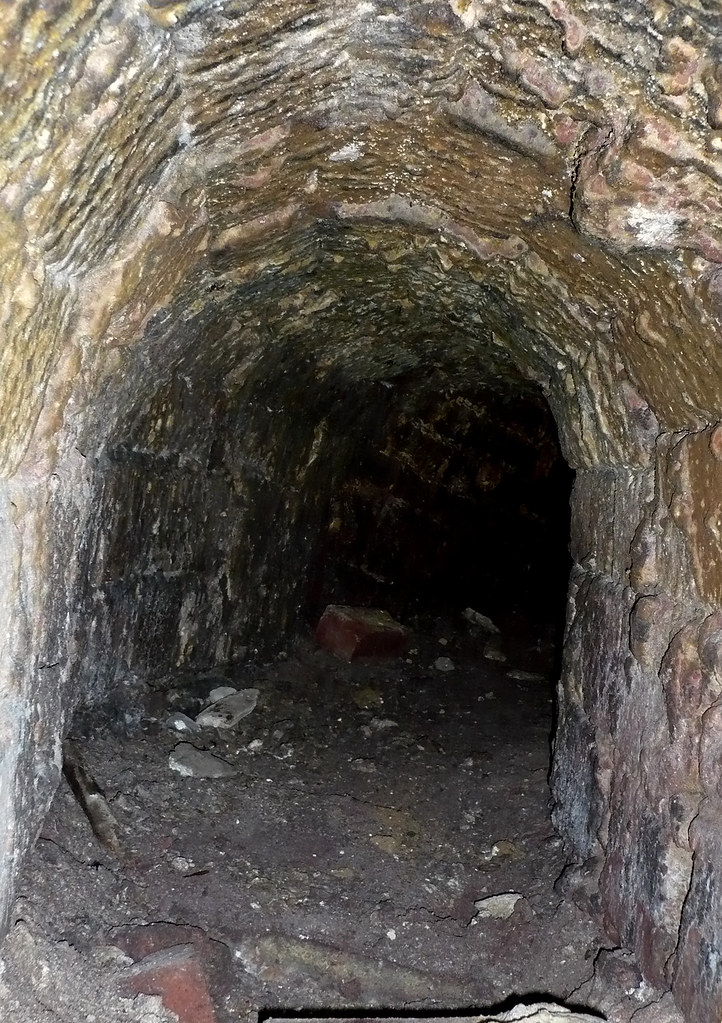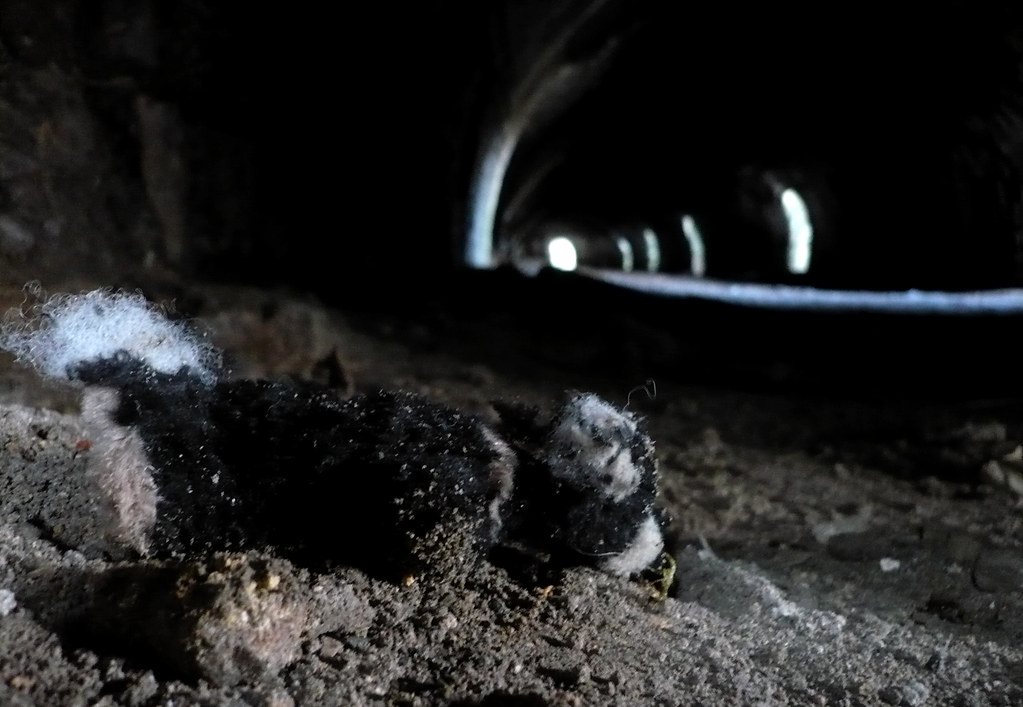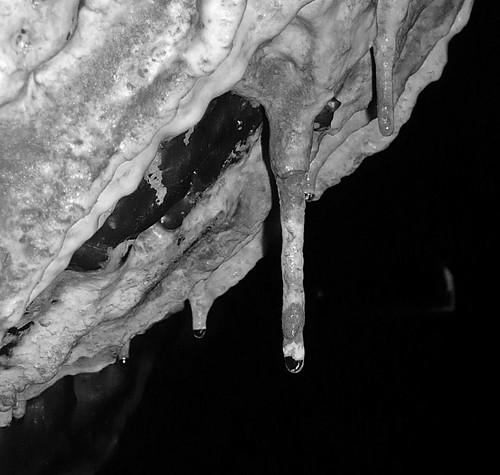The Hoffman Kiln at Langcliffe is a fine, and unique example of a kiln of this kind.
Built in 1872, it remained in use until 1931 and was officially retired in 1936.
During the second world war it was re-opened briefly for use as a chemicals storage depot and then subsequently left abandoned.
Considering it has seen no use since then it has survived remarkably well, and many of the other kilns of it's type have been demolished or fallen into decay. It is the only surviving kiln of such a grand scale in the country (possibly the world) and is a testament to the technology of the 19th century.
It's design is basically of a huge circular nature and it is possible to enter the kiln and walk all the way around within. I believe the principal worked much like a normal kiln but essentially "on its side" and much much larger. The inner wall of the kiln is broken by small passages at set intervals (see 3rd picture) which at a guess lead directly to the furnace and fed the heat/flames out into the kiln.(It is possible to crawl down some of these side passages, at the end of which you reach a vertical shaft intersecting it that contains some form of metal cradle or brace).





The site is pretty impressive, and the surrounding woodland and fields also contain remains of buildings which I presume were the old houses of the workers as well as old industrial buildings and winch housings. Well worth an explore.
To see more pics take a look here - http://www.flickr.com/photos/18394337@N00/sets/72157619853979471/detail/
Built in 1872, it remained in use until 1931 and was officially retired in 1936.
During the second world war it was re-opened briefly for use as a chemicals storage depot and then subsequently left abandoned.
Considering it has seen no use since then it has survived remarkably well, and many of the other kilns of it's type have been demolished or fallen into decay. It is the only surviving kiln of such a grand scale in the country (possibly the world) and is a testament to the technology of the 19th century.
It's design is basically of a huge circular nature and it is possible to enter the kiln and walk all the way around within. I believe the principal worked much like a normal kiln but essentially "on its side" and much much larger. The inner wall of the kiln is broken by small passages at set intervals (see 3rd picture) which at a guess lead directly to the furnace and fed the heat/flames out into the kiln.(It is possible to crawl down some of these side passages, at the end of which you reach a vertical shaft intersecting it that contains some form of metal cradle or brace).





The site is pretty impressive, and the surrounding woodland and fields also contain remains of buildings which I presume were the old houses of the workers as well as old industrial buildings and winch housings. Well worth an explore.
To see more pics take a look here - http://www.flickr.com/photos/18394337@N00/sets/72157619853979471/detail/


































